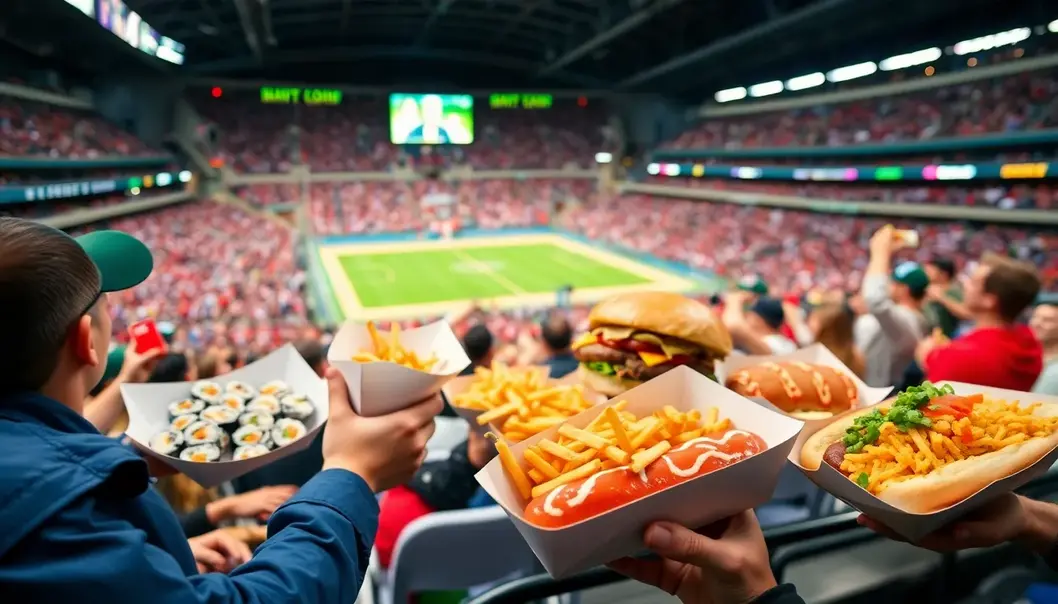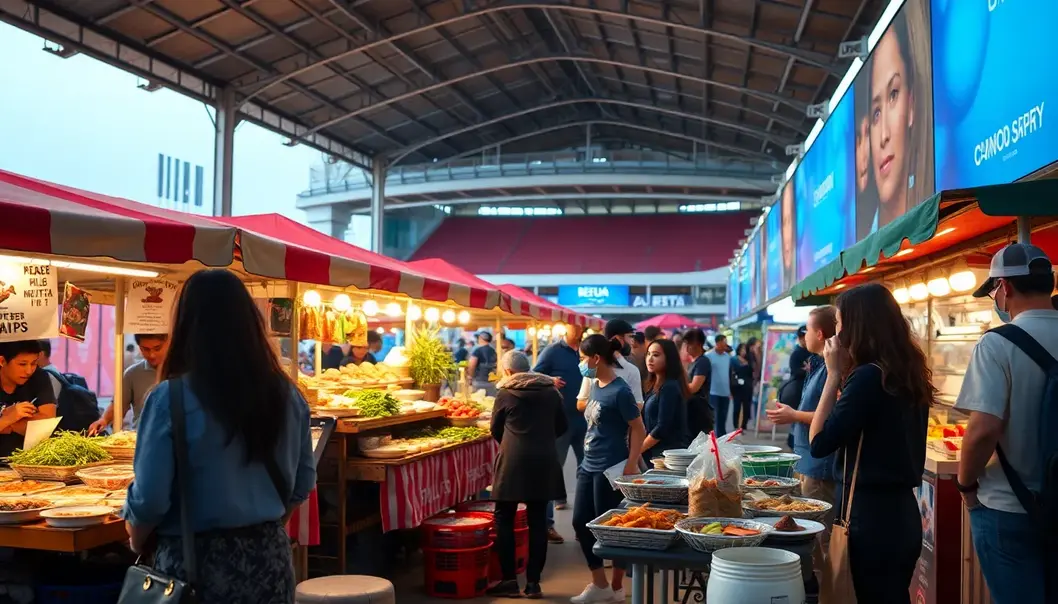Sports fans know that few things are more exhilarating than watching your favorite team clinch victory. But what if the true MVP of your game day experience is what’s on your plate? As global food trends sweep through booming stadiums and quiet local pubs alike, they impact not just what’s for dinner but the very fabric of local cultures. From the rise of plant-based snacks to the resurgence of traditional dishes, every culinary wave creates ripples in local communities, altering fan interactions and giving a new flavor to game day traditions. Let’s dive deep into how these food trends score more than just taste points.
The Evolution of Game Day Snacks

Game day snacks have always been an integral part of the sports fan experience. What used to be a straightforward menu of hot dogs, pretzels, and popcorn has evolved into a dynamic culinary landscape reflecting global food trends. This transformation hasn’t been homogeneous, though; it’s a tapestry woven from diverse cultural threads, resonating with the local palate while introducing an international flair.
Traditionally, game day fare has been synonymous with convenience and comfort, often emphasizing ease over variety. The introduction of gourmet and international snacks, however, has significantly shifted this paradigm. Now, alongside the classic nachos, we find artisanal charcuterie boards, sushi rolls, and spicy Korean tacos. These additions echo a broader culinary awakening, where households explore beyond national borders for inspiration, embracing flavors once considered exotic.
The impact of these global influences is multifaceted. For the local culture, it’s an opportunity to juxtapose tradition with innovation. In places where regional identity is fiercely protected, introducing new culinary offerings can either be a cultural enrichment or a potential point of contention. While some purists might balk at the presence of truffle oil or fusion dumplings alongside their beloved corn dogs, others may welcome the diversity as a reflection of an increasingly interconnected world.
Sports fans’ reactions to these changes are as varied as the snacks themselves. For some, the newfound variety is a chance to explore tastes they might not encounter in their usual dining experiences. Others might view the evolution as a departure from cherished rituals associated with their favorite teams. Balancing tradition with innovation requires sensitivity to both history and the evolving tastes of the fan base.
Ultimately, the embrace of gourmet and international snacks symbolizes more than just a culinary shift; it’s a cultural dialogue occurring within stadiums and living rooms alike. This dialogue fosters inclusivity, encourages culinary exploration, and reflects the broader themes of diverse modern identities. Sports venues, therefore, have become not only arenas of athletic prowess but also showcases for dynamic gastronomic experiences.
The evolution of game day snacks is a compelling example of how local culinary practices adapt to global trends, preserving the essence of fan camaraderie while expanding the horizons of food culture. This balancing act is likely to continue to reflect the broader global food trends, much like the trends in fast fashion, which can be explored further here.
Local Culinary Identity Meets Global Trends

As the world becomes increasingly interconnected, global food trends begin to permeate even the most localized culinary environments. Places like sports venues, historically known for their traditional snack options, are now vibrant stages where local culinary identities clash and harmonize with global influences. The juxtaposition of the familiar and the new presents both opportunities and challenges for local food vendors aiming to maintain authenticity while embracing innovation.
Sports venues, in particular, serve as microcosms of culinary exchange. These gatherings bring together diverse crowds, making them hotspots for testing new trends. Vendors here face the dual task of catering to traditional tastes while also exploring innovative offerings. One of the most profound impacts of globalization in these settings is the rise of fusion cuisine, where elements from disparate culinary traditions merge to create unique dishes. For local vendors, adopting fusion food can be a double-edged sword; it provides an exciting avenue for creativity, yet it also risks diluting the traditional flavors that regular patrons treasure.
Moreover, the increased emphasis on sustainability within the food industry further complicates the scenario. Vendors are increasingly expected to utilize locally sourced ingredients and minimize waste, aligning with broader environmental goals. This trend dovetails with the rising consumer demand for transparency about food origins and production methods. For local vendors, embracing sustainability is not just a moral imperative but also an opportunity to differentiate themselves in a crowded market, potentially turning eco-conscious practices into a selling point to attract fans who value environmental responsibility.
Balancing authenticity and innovation is an ongoing challenge. Local vendors must deftly integrate global trends without losing their regional identity, a task that requires a deep understanding of both their cultural heritage and the evolving tastes of their customers. The introduction of plant-based alternatives, for instance, showcases how local flavors can be preserved while meeting modern dietary preferences. By using regional spices and cooking techniques, vendors can ensure these new offerings resonate with local palates.
Navigating these complexities requires vendors to engage in continuous learning and adaptation. They must stay informed about emerging global trends while grounding their offerings in local culture. Some vendors achieve this by collaborating with local chefs who have a knack for integrating international influences with indigenous flavors. Others rely on customer feedback, adjusting their menus based on the reception of new dishes.
The evolution of local culinary identity in the face of global trends is a dynamic process. While challenges to authenticity are real, the possibilities for enriching local culture through thoughtful assimilation of new ideas are equally promising. As food lovers continue to crave both nostalgia and novelty, vendors at sports venues are uniquely positioned to offer the best of both worlds, ensuring that the essence of local cuisine thrives amidst global culinary currents.
For a broader perspective on how trends transcend culinary creations, check out insights on current fashion evolutions. Read more
Final words
As the culinary landscape evolves, sports fans find themselves in a unique position to experience cultural fusions and innovations in the simplest of forms—game day food. These trends do more than nourish the body; they serve as a conduit for cultural exchange and community building. Whether you’re biting into a plant-based bratwurst or savoring a classic nacho platter, the flavors of today reflect a global community more intertwined than ever. As food trends continue to evolve, the question remains: what will the next game day dish tell us about our ever-changing culture?
Join us in exploring more about the fusion of food and culture. Discover exclusive content and engage with our community!
Learn more: https://www.foodcultureandfans.com/join
About us
Our platform offers exclusive insights into the relationship between food trends, sports culture, and local identities. Join our community to engage in discussions, receive expert analyses, and access unique content enriching your knowledge about the intersection of gastronomy and sports.

